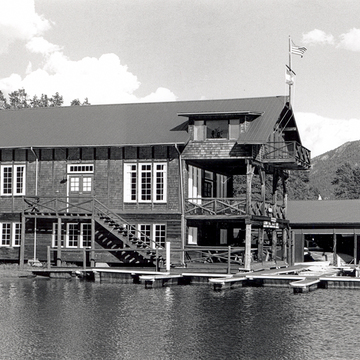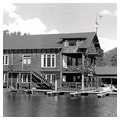Free off-street parking behind the house at the west end of 4th Street makes this a good starting point for a walking tour of Georgetown. A two-story Gothic Revival showcase, this has always been Georgetown's finest residence. Mine mogul William A. Hamill, an Englishman, bought the residence from its builder, his brother-in-law, and hired Denver architect Robert Roeschlaub to enlarge the house. Roeschlaub added the central and back wings, along with the solarium, bay windows, and matching oriels.
A granite wall surrounds a lawn with a large metal fountain in front of the carriage house and office (1880–1881), two miniaturizations of the Chateau Style. In contrast with the clapboard house, the carriage house is rubblestone granite, while the office is ashlar granite with raised quoins. The resplendent office interior has a huge wall safe, walnut wood-work with burl veneer, and a grand staircase to upstairs rooms under a crested hipped roof.
Hamill, a member of the state legislature, was also the wealthiest man in town, thanks to the Pelican and Dives mines. He supposedly lit his cigars with ten-dollar bills. The Georgetown Society acquired his house in 1971 and has expertly restored and furnished it as a house museum. The solarium is memorable, and the six-seat outhouse in back is Colorado's finest with its proud cupola and three walnut seats in front for the Hamills. On the other side, three plain pine seats accommodated servants who, archaeologists report, used their holes to hide broken Haviland china, empty liquor bottles, and other incriminating evidence.

















